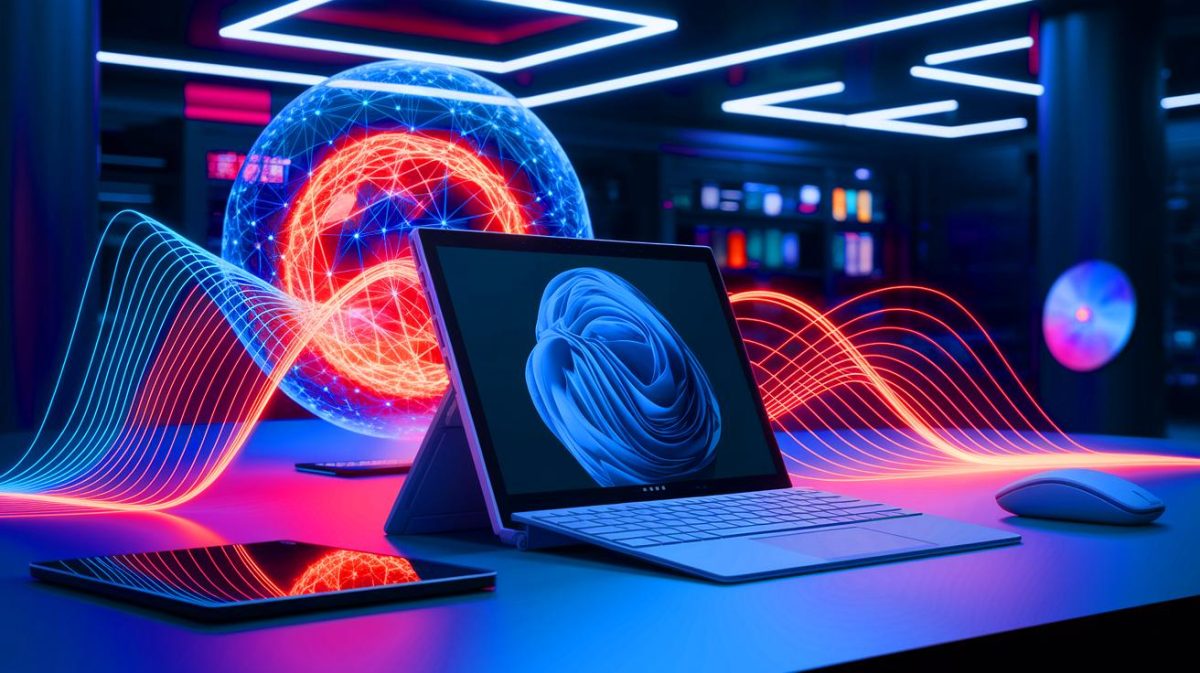| IN A NUTSHELL |
|
For nearly three months, a Microsoft advertisement for its Surface products ran, subtly integrating elements generated by artificial intelligence (AI). Recently disclosed by the company itself, this covert use of AI went completely unnoticed by the general public, showcasing the growing sophistication of these technologies and their ability to reshape content creation. This case not only highlights the potential of AI but also raises questions about the future of creative industries and the balance between human and machine collaboration.
The Unnoticed AI Infiltration
In January, Microsoft released a minute-long advertisement promoting its Surface Pro and Surface Laptop devices. The ad appeared dynamic and professional, seemingly typical at first glance. However, it wasn’t until the company’s admission in late April that the world learned several shots in this video were not captured by a camera but were the product of a generative AI‘s imagination. This revelation, shared through a blog post by Jay Tan, senior communication design manager at Microsoft, unveiled a fascinating and somewhat unsettling experiment.
The advertisement was not an entirely artificial creation but rather the result of a hybrid approach. The creative team meticulously selected scenes to be entrusted to AI. Complex movements, such as close-ups of hands typing on a keyboard, were filmed live, while quick shots with minimal movement were ideal for co-creation with generative AI tools. This process was far from straightforward. Microsoft’s teams initially used AI to generate the script, storyboards, and an initial presentation. They then embarked on a meticulous process: combining text prompts with example images to guide image generators, refining these visuals, correcting occasional AI “hallucinations” (typical errors or inconsistencies), and finally animating them using video generators like Hailuo or Kling.
Significant Cost Savings
Despite the considerable effort, the potential savings were enormous. Visual designer Brian Townsend estimates this method “probably saved 90% of the usual time and costs.” This approach aligns with Jon Friedman’s vision, Microsoft’s head of design, for whom AI is becoming an additional tool in creatives’ arsenal, shifting their role towards more editing and curation. The most striking aspect is that despite over 40,000 views on YouTube before the revelation, no comments appeared to suspect AI’s involvement.
In hindsight, some clues might have been noticeable: unnaturally styled meeting notes, a jar with strange proportions, and a certain visual “polish” characteristic of AI. However, without a prior alert, the deception was flawless, aided by rapid editing. This discreet AI incursion into a mainstream advertisement demonstrates the growing maturity of these tools and their ability to blend into reality almost imperceptibly. It likely heralds a new era for the creative industry, where the line between human creation and machine-assisted production becomes increasingly blurred.
Revolutionizing Content Creation
The integration of AI in advertising marks a revolutionary shift in how content is created and consumed. AI’s ability to generate realistic visuals and scripts not only cuts down production time but also enables creative teams to explore new avenues previously constrained by budget or logistical limits. Cisco McCarthy, the creative director, emphasized the intensity of the process, stating, “We probably tested thousands of different prompts, chiseling the result bit by bit. It’s never about a single prompt. It demands relentless perseverance.”
This relentless pursuit of perfection demonstrates the potential for AI to revolutionize content creation, allowing for rapid iterations and refinements that were once unimaginable. As AI tools continue to evolve, they will undoubtedly become indispensable in creative workflows, enhancing capabilities while also posing ethical and practical challenges that the industry must navigate carefully.
The Future of AI in Advertising
As AI continues to evolve, its role in advertising is set to expand further. The ability to seamlessly integrate AI-generated content into traditional media challenges our perceptions of authenticity and creativity. The Microsoft ad serves as a testament to the capabilities of AI, but it also raises questions about transparency and the potential for AI to be used in ways that may deceive or manipulate audiences.
The industry must consider how to balance the innovative potential of AI with ethical considerations, ensuring that audiences remain informed about the content they consume. As we move forward, the challenge will be to harness AI’s power while maintaining trust and authenticity in the messages conveyed. How will the advertising industry adapt to these changes, and what role will AI play in shaping the future of creative media?
Did you like it? 4.5/5 (27)








Wow, I had no idea AI could be used in this way! 😮